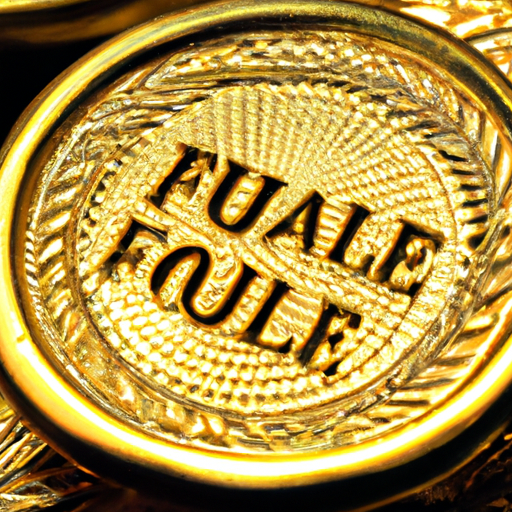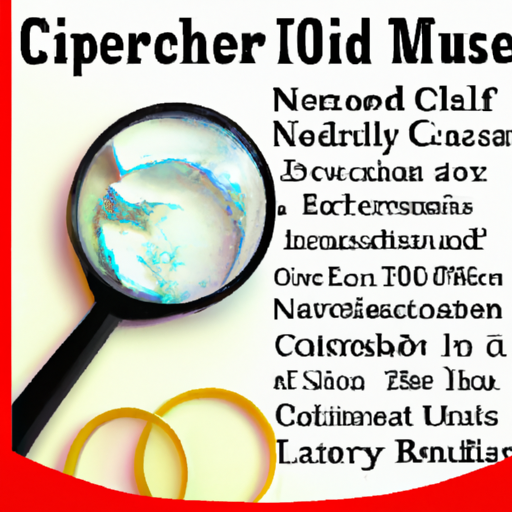Picture this: you’ve come across a stunning piece of gold jewelry at a seemingly incredible price. You can’t help but be drawn to its shine and allure. But before you get caught up in the excitement, it’s vital to know the truth behind counterfeit gold. In the world of investing, scams and fakes are lurking everywhere, and gold is no exception. That’s why it’s crucial to arm yourself with the knowledge to spot these deceitful imitations. In this article, we’ll dive into some valuable tips that will help you become a master at identifying counterfeit gold products. So, let’s get started and protect your investments!
The Allure of Fake Gold
Investing in gold has always been a popular choice for individuals looking to diversify their investment portfolio. The allure of gold lies not only in its historical value and cultural significance but also in its ability to act as a hedge against inflation and economic uncertainty. However, with the popularity of gold comes the rise of counterfeit gold products, which can pose a significant risk to unsuspecting investors. In this article, we will delve into the world of counterfeit gold, discuss why it is so appealing to both counterfeiters and investors, and provide tips on how to spot fake gold products.
Understanding Counterfeit Gold
Counterfeit gold refers to any gold product that is falsely represented in terms of its purity or origin. These fake gold products are often designed to imitate the physical characteristics of real gold, making it difficult for even seasoned investors to distinguish between genuine and fake gold. The appeal of fake gold lies in the potential for financial gain, as investing in gold can provide substantial returns. Counterfeiters capitalize on this appeal by producing deceptive gold products that mimic the appearance of real gold while offering a significantly lower price.
Why is fake gold so appealing?
Counterfeit gold is appealing to both counterfeiters and investors for different reasons. For counterfeiters, the allure lies in the opportunity to make a quick profit by selling fake gold at inflated prices. By imitating the look, feel, and weight of real gold, counterfeiters can deceive unsuspecting buyers into purchasing their fake products. On the other hand, investors are drawn to fake gold because of the potential for substantial financial gain. The lower cost of counterfeit gold products makes them an attractive investment option, especially for those who are not well-versed in spotting fake gold.
Types of counterfeit gold products
Counterfeit gold products come in various forms, ranging from coins and bars to jewelry and certificates. It is important for investors to be aware of these different types to ensure that they can spot counterfeit gold regardless of the form it takes. Fake gold coins, for example, are often produced with the intention of imitating popular and valuable coins such as the American Eagle or the South African Krugerrand. Fake gold bars, on the other hand, are typically made from tungsten or other base metals and then coated with a thin layer of gold to resemble the real thing. Jewelry and certificates are also common mediums through which counterfeit gold is introduced into the market.
Physical Characteristics of Gold
To spot counterfeit gold, it is essential to understand the physical characteristics of genuine gold. By familiarizing yourself with these characteristics, you will be better equipped to identify any discrepancies that may indicate the presence of counterfeit gold.
Examining the weight and density
One of the key physical characteristics of gold is its weight and density. Genuine gold is known for its heaviness and density, which gives it a distinct feel when held in your hand. Counterfeit gold products made from less dense materials, such as tungsten, may feel lighter or hollow in comparison. To test the weight and density of a gold product, try comparing it to a known genuine gold item of similar size and shape. If the weight feels noticeably different or the density seems off, there is a high probability that the gold is fake.
Analyzing the color and shine
The color and shine of gold are other key indicators of its authenticity. Real gold possesses a unique yellowish color that is difficult to replicate entirely. Counterfeit gold products may feature a slightly different shade of yellow or exhibit a color that appears more dull or brassy. Additionally, genuine gold has a natural luster and shine that is unmatched by imitations. Counterfeit gold, particularly gold-plated products, may lack the same brilliance and reflectivity as solid gold items. Take note of any inconsistencies in color or shine when inspecting a gold product, as these can be telltale signs of counterfeit gold.
Testing for magnetic properties
While gold is not magnetic, certain counterfeit gold products may exhibit magnetic properties due to their composition. To test for magnetism, simply place a magnet near the gold product and observe its reaction. If the gold is attracted to the magnet or shows any signs of magnetic pull, it is highly likely that it is fake gold. Genuine gold should not be affected by a magnet at all. Keep in mind that this test is not foolproof, as some counterfeit gold products may be made from non-magnetic materials. It is always best to combine magnetic testing with other methods to ensure accuracy.
Inspecting Hallmarks and Stamps
Hallmarks and stamps are crucial elements in determining the authenticity of gold. These markings provide valuable information about the purity, origin, and manufacturer of a gold product. However, counterfeiters have become adept at replicating hallmarks and stamps, making it necessary for investors to know how to differentiate between genuine and fake markings.
Understanding the significance of hallmarks
Hallmarks are official marks or stamps that indicate the quality and authenticity of a gold product. They are typically imprinted by a renowned assay office and serve as a guarantee of purity. Different countries have their own hallmarking systems, with the most recognized being the “fineness mark” or “millesimal mark,” which indicates the purity of the gold in parts per thousand. Familiarize yourself with the hallmarking system of your country or the countries from which you are purchasing gold to ensure that you can verify their authenticity.
Identifying common fake hallmarks
Counterfeiters often attempt to replicate genuine hallmarks to make their fake gold products appear legitimate. However, there are telltale signs that can help you identify fake hallmarks. Look for any spelling mistakes or incorrect formatting, as these are clear indications of a counterfeit hallmark. Additionally, examine the overall quality of the imprint. Genuine hallmarks are typically engraved with precision and clarity, whereas fake hallmarks may exhibit blurry or shallow engravings. Be wary of any inconsistencies in the font, size, or style of the hallmark, as these are red flags that the gold product may be counterfeit.
Verifying the authenticity of stamps
In addition to hallmarks, gold products often feature stamps that indicate the manufacturer or origin. Counterfeiters may attempt to replicate these stamps as well, making it crucial for investors to verify their authenticity. Research the manufacturer or mint referenced in the stamp and compare it to reputable sources to ensure that it is legitimate. Look for any variations in font, spacing, or positioning of the stamp. Genuine stamps should be clearly visible and exhibit consistent quality throughout the gold product. If you notice any irregularities or deviations from the norm, exercise caution as the gold product may be counterfeit.
Conducting Acid Tests
Acid tests are commonly used by jewelers and gold dealers to determine the purity of gold. By using nitric acid, it is possible to assess the reaction of the acid to the gold and interpret the results to ascertain its authenticity.
Using nitric acid to test gold purity
To conduct an acid test, you will need a testing stone, a file, and a bottle of nitric acid. Begin by filing a small notch on the gold product to expose the inner metal. Apply a small drop of nitric acid onto the filed portion and observe the reaction. Genuine gold will not react or show any signs of discoloration, as it is impervious to nitric acid. However, if the gold product is counterfeit or of low purity, it will exhibit a reaction, such as a color change or fizzing. Interpret the acid test results carefully, as they can provide valuable insights into the authenticity of the gold.
Performing the scratch test
The scratch test is a simple yet effective method of testing the purity of gold. To perform this test, use a small, inconspicuous area of the gold product and gently scratch it against a testing stone. The resulting streak on the stone will indicate the true color of the metal beneath the surface. Compare the streak left by the gold against a color chart to determine the approximate purity of the gold. It is important to note that this test is not highly precise and should be used in conjunction with other methods for a more accurate assessment.
Interpreting the results
Interpreting the results of acid and scratch tests requires knowledge and experience. It is recommended that you consult a reputable jeweler or gold dealer to assist you in analyzing the results. They will have the expertise and equipment necessary to provide an accurate assessment of the gold’s purity. Remember that while acid and scratch tests can provide valuable insights, they should not be the sole basis for determining the authenticity of gold. It is always best to employ multiple testing methods to ensure accurate results.
Utilizing Magnet Tests
Magnet tests are another tool in the arsenal of gold authenticity testing. Although gold is not inherently magnetic, counterfeit gold products may exhibit magnetic properties due to the presence of base metals. Conducting a magnet test can help determine whether a gold product is genuine or fake.
Exploring the concept of magnetism in gold
Understanding the concept of magnetism in gold is essential to effectively utilize a magnet test. Gold is a non-magnetic metal, meaning it is not attracted to magnets. Counterfeit gold products, however, may contain traces of magnetic metals, such as iron or nickel, which will cause them to exhibit magnetic properties. By subjecting the gold product to a magnet test, you can gauge its authenticity based on its reaction to the magnetic field.
Conducting a magnet test on gold products
To conduct a magnet test, bring a magnet close to the gold product and observe its behavior. Genuine gold should not be attracted to the magnet and should not exhibit any signs of magnetic pull. If the gold product is attracted to the magnet or shows any signs of magnetism, it is likely to be a counterfeit. Keep in mind that this test is not foolproof, as some counterfeit gold products may be made from non-magnetic materials or incorporate small amounts of magnetic metals. It is always best to combine magnet testing with other methods to ensure accurate results.
Distinguishing Gold Plating from Solid Gold
Gold plating is a common technique used by counterfeiters to create the illusion of solid gold. By understanding the process of gold plating and identifying key signs, you can effectively distinguish between gold-plated items and solid gold.
Understanding the process of gold plating
Gold plating involves applying a thin layer of gold onto the surface of a base metal, such as copper or silver. The base metal acts as a substrate, while the gold layer provides the desired appearance. Counterfeiters often employ gold plating to mimic the appearance of solid gold at a fraction of the price. While gold-plated items may possess a thin layer of genuine gold, the majority of the item is made up of the base metal.
Identifying signs of gold plating
There are several signs that can help you identify gold-plated items. One common sign is wear or fading of the gold layer over time. Gold plating has a limited lifespan and will eventually wear off, exposing the base metal underneath. Look for areas where the gold layer appears thin or has completely disappeared, as these are clear indications of gold plating. Additionally, observe any discoloration or greenish hue around the edges or contact points of the item, as these are signs of the base metal peeking through. Be cautious if the price of a gold product seems too good to be true, as it may indicate that the item is gold-plated rather than solid gold.
Confirming solid gold through acid or magnet tests
To confirm whether a gold-plated item is solid gold or gold-plated, you can perform acid or magnet tests. As acid and magnet tests assess the interior of the item, they can determine whether it is made of solid gold or another metal. By conducting these tests on inconspicuous areas of the item, you can gain valuable insight into its authenticity. If the acid or magnet tests reveal that the interior of the item is not gold, it is likely that the item is gold-plated.
Avoiding Common Scams and Tricks
In addition to understanding how to spot counterfeit gold, it is crucial to be aware of common scams and tricks employed by counterfeiters. By familiarizing yourself with these tactics, you can protect yourself against falling victim to fraudulent schemes.
Beware of pyramid schemes and investment frauds
Pyramid schemes and investment frauds often prey on individuals looking to invest in gold. These scams promise high returns and guarantee financial success, only to leave investors with worthless or counterfeit gold products. Be cautious of unsolicited investment offers or deals that seem too good to be true. Research the company or individual offering the investment opportunity and consult reputable sources before committing your funds. Remember, if an investment opportunity sounds too good to be true, it probably is.
Recognizing common tricks used by counterfeiters
Counterfeiters employ various tricks to deceive unsuspecting investors. One common trick is to sell gold-plated or gold-filled items as solid gold. These items may appear genuine at first glance but lack the intrinsic value and purity of solid gold. Another trick is to mix counterfeit gold with genuine gold, creating a product that seems authentic but is actually of lower purity. Familiarize yourself with the physical characteristics and testing methods discussed in this article to mitigate the risk of falling for these tricks. Always purchase gold from reputable dealers and request certifications of authenticity whenever possible.
Seeking Professional Assistance
When in doubt about the authenticity of a gold product, it is always wise to seek professional assistance. Consulting a reputable jeweler or gold dealer can provide valuable insights and expertise in determining the authenticity of gold. These professionals have the necessary tools and knowledge to conduct thorough tests and assessments, ensuring that you make an informed investment decision. Additionally, consider getting a second opinion from another expert to further verify the authenticity of the gold product. By enlisting the help of professionals, you can minimize the risk of falling victim to counterfeit gold scams.
Conclusion
In the world of gold investment, the allure of counterfeit gold is a risk that cannot be ignored. By understanding the physical characteristics of gold, inspecting hallmarks and stamps, conducting acid and magnet tests, distinguishing gold plating from solid gold, avoiding scams and tricks, and seeking professional assistance, investors can protect themselves against fake gold products. Remember, knowledge is power when it comes to making sound investment decisions. Arm yourself with the information and tools necessary to spot counterfeit gold, and invest with confidence in the genuine value and allure of gold.



